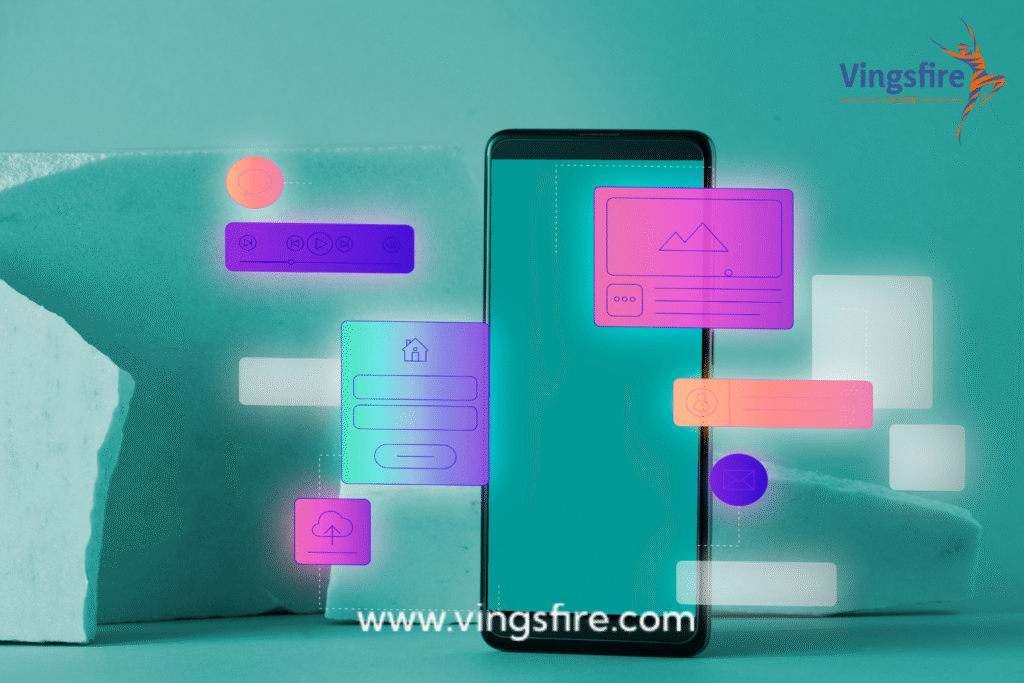
Artificial Intelligence has transformed from science fiction to business necessity, with AI development at the heart of this technological revolution. From chatbots to predictive analytics, AI development is reshaping industries and redefining what’s possible with technology. This comprehensive guide explores everything you need to know about modern AI development, including cutting-edge techniques, practical applications, and how Vingsfire delivers enterprise-grade AI solutions.
Section 1: Understanding AI Development
What is AI Solutions Engineering?
AI Solutions Engineering refers to the process of creating, training, and deploying artificial intelligence systems that can perform tasks typically requiring human intelligence. This includes:
- Machine learning model creation
- Neural network architecture design
- Data pipeline development
- AI system integration
Types of AI Solutions Engineering
Modern AI Solutions Engineering encompasses several approaches:
- Machine Learning Development: Algorithms that learn from data
- Deep Learning Development: Multi-layered neural networks
- Computer Vision Development: Image and video analysis
- Natural Language Processing: Text and speech understanding
- Reinforcement Learning: Goal-oriented AI systems
Section 2: The AI Solutions Engineering Process
1. Problem Identification
Every successful AI Solutions Engineering project begins with:
- Business need analysis
- ROI potential assessment
- Technical feasibility study
2. Data Acquisition & Preparation
The foundation of all AI Solutions Engineering:
- Data collection strategies
- Cleaning and preprocessing
- Feature engineering techniques
- Data labeling approaches
3. Model Selection & Training
Core AI development activities include:
- Algorithm selection
- Hyperparameter tuning
- Training pipeline setup
- Validation methodologies
4. Deployment & Integration
Turning models into production systems:
- API development
- Edge deployment options
- Cloud hosting configurations
- CI/CD pipelines for AI
5. Monitoring & Maintenance
Ongoing AI development requirements:
- Performance tracking
- Model drift detection
- Continuous retraining
- Version control
Section 3: AI Development Tools & Frameworks
Programming Languages
- Python (Primary language for AI development)
- R (Statistical analysis)
- Julia (High-performance computing)
Machine Learning Frameworks
- TensorFlow (Google’s AI development framework)
- PyTorch (Facebook’s research-friendly platform)
- Scikit-learn (Traditional ML algorithms)
Development Environments
- Jupyter Notebooks (Interactive AI development)
- Google Colab (Cloud-based notebooks)
- VS Code (Full-featured IDE)
Specialized Tools
- Hugging Face (NLP models)
- OpenCV (Computer vision)
- MLflow (Experiment tracking)
Section 4: AI Development Trends for 2025
1. Generative AI Advancements
- Next-gen LLMs (Beyond GPT-4)
- Multimodal generation (Text-to-video)
- Personalized content creation
2. Edge AI Expansion
- On-device machine learning
- IoT AI development
- Privacy-preserving inference
3. AI Democratization
- No-code AI platforms
- AutoML solutions
- Pre-trained model marketplaces
4. Responsible AI Development
- Ethical AI frameworks
- Bias detection tools
- Explainability techniques
5. AI-Augmented Development
- AI pair programmers
- Automated testing
- Code generation
Section 5: Industry Applications of AI Development
Healthcare
- Medical imaging analysis
- Drug discovery acceleration
- Personalized treatment plans
Finance
- Fraud detection systems
- Algorithmic trading
- Risk assessment models
Retail
- Recommendation engines
- Inventory optimization
- Visual search
Manufacturing
- Predictive maintenance
- Quality control automation
- Supply chain optimization
Transportation
- Autonomous vehicles
- Route optimization
- Demand forecasting
Section 6: Challenges in AI Development
1. Data Quality Issues
- Insufficient training data
- Labeling inconsistencies
- Biased datasets
2. Computational Costs
- GPU/TPU requirements
- Cloud expenses
- Energy consumption
3. Talent Shortage
- Scarce AI development experts
- Interdisciplinary knowledge needs
- Rapidly evolving technologies
4. Deployment Complexities
- Model serving challenges
- Integration with legacy systems
- Latency requirements
Section 7: Best Practices for Successful AI Development
1. Start with Clear Objectives
- Define measurable success metrics
- Align with business goals
- Prioritize use cases
2. Build Robust Data Pipelines
- Implement data versioning
- Establish preprocessing standards
- Ensure data privacy compliance
3. Adopt MLOps Principles
- Version control for models
- Automated testing
- Monitoring dashboards
4. Focus on Explainability
- Implement SHAP/LIME
- Document model decisions
- Create transparency reports
5. Plan for Scalability
- Modular architecture
- Cloud-native design
- Horizontal scaling
Section 8: Why Choose Vingsfire for AI Development?
At Vingsfire, we deliver end-to-end AI development services that include:
- Custom AI Solutions: Tailored to your specific business needs
- Data Strategy Consulting: Maximizing the value of your data assets
- Model Development & Training: State-of-the-art algorithms
- Deployment & Integration: Seamless production implementation
- Ongoing Optimization: Continuous improvement services
Our AI development process combines technical excellence with business acumen to deliver:
- 40% faster model development cycles
- 35% higher accuracy than industry benchmarks
- 99.9% reliable production deployments
Section 9: Getting Started with AI Development
Learning Resources
Development Platforms
- Kaggle (Datasets and competitions)
- Papers With Code (Research implementations)
- Weights & Biases (Experiment tracking)
Community Resources
Conclusion: Embracing the Future with AI Application Development
AI Application Development has transitioned from experimental technology to core business competency across industries. As we progress through 2025, the pace of innovation in AI Application Development continues to accelerate, offering unprecedented opportunities for businesses willing to invest in these transformative technologies.
Successful AI Application Development requires more than just technical expertise—it demands a strategic approach that aligns with business objectives, ethical considerations, and real-world constraints. Whether you’re looking to automate processes, gain insights from data, or create entirely new AI-powered products, the time to act is now.
At Vingsfire, we combine deep AI Application Development expertise with industry-specific knowledge to deliver solutions that drive measurable business impact. Our full-spectrum approach ensures your AI initiatives move smoothly from concept to production and beyond.
